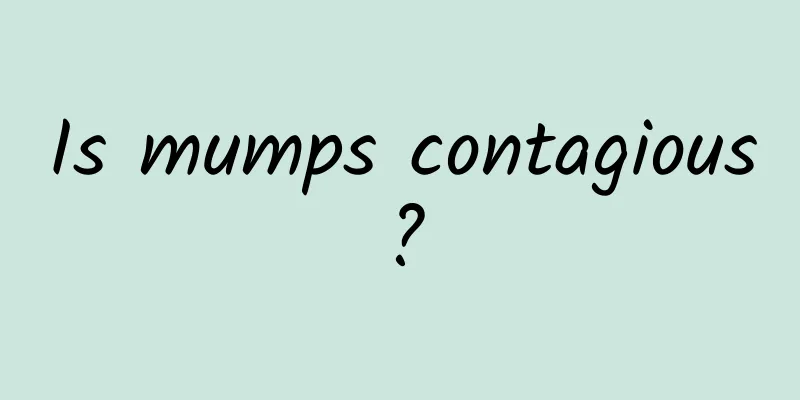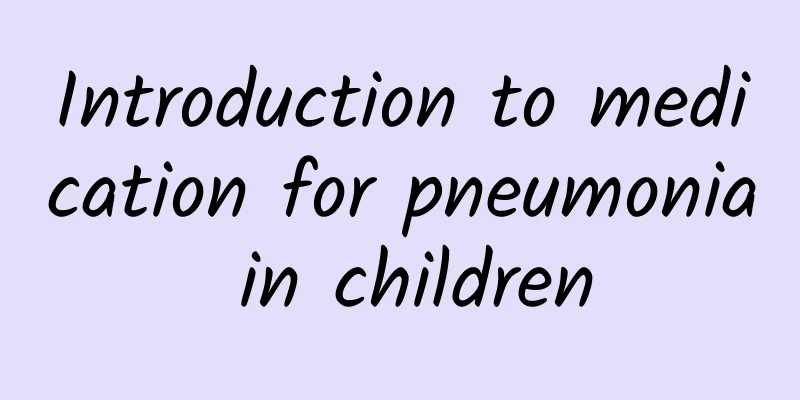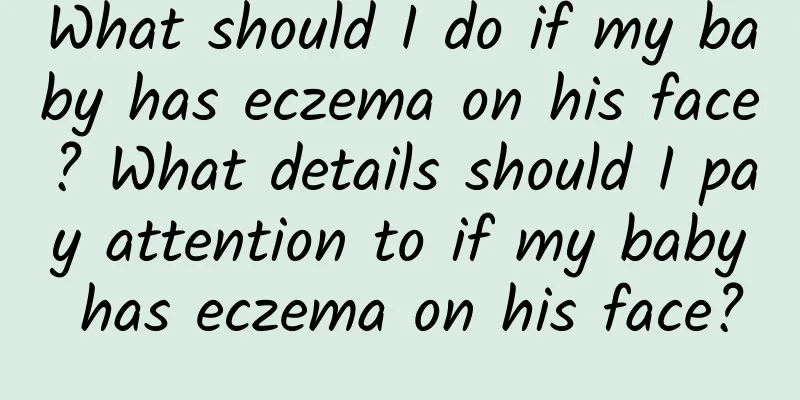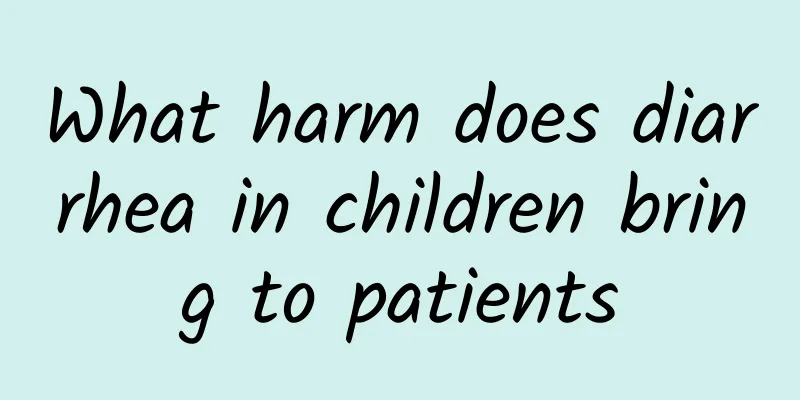How to prevent baby diarrhea? What are the causes of diarrhea in children?
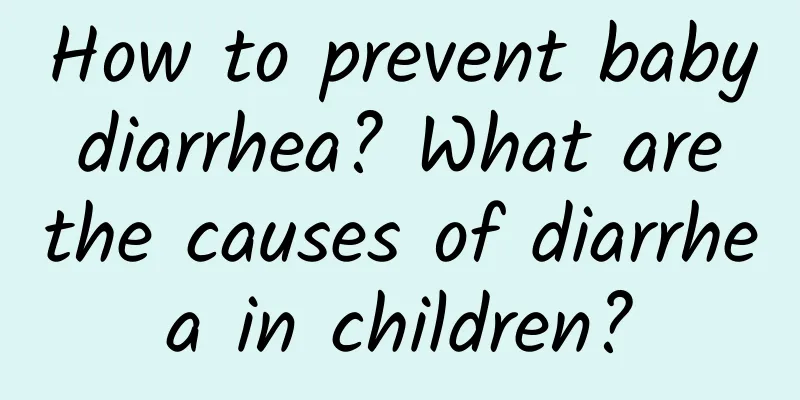
|
Pediatric diarrhea is a group of diseases mainly caused by diarrhea and multiple pathogens and factors. The main characteristics are increased frequency and changes in stool characteristics, which may be accompanied by fever, vomiting, abdominal pain and other symptoms and varying degrees of water, electrolyte and acid-base imbalance. Pathogens can be caused by viruses (mainly human rotavirus and other enteroviruses), bacteria (pathogenic Escherichia coli, toxigenic Escherichia coli, hemorrhagic Escherichia coli, invasive Escherichia coli, and Salmonella typhimurium, Campylobacter jejuni, Yersinia, Staphylococcus aureus, etc.), parasites, fungi, etc. Extraintestinal infection, intestinal flora disorders caused by abuse of antibiotics, allergies, improper feeding and climatic factors can also cause the disease. It is a common disease in infants and young children under 2 years old. The causes of diarrhea in children are complex 1. Infection factors 1. Intestinal infection It can be caused by viruses, bacteria, fungi, and parasites, with the former two being more common, especially viruses. a. Viral infection 80% of pediatric diarrhea in cold seasons is caused by viral infection. The main pathogen of viral enteritis is rotavirus, followed by norovirus, astrovirus, coxsackievirus, echovirus, coronavirus, etc. b. Bacterial infection ① Escherichia coli that cause diarrhea include: pathogenic Escherichia coli, toxigenic Escherichia coli, invasive Escherichia coli, hemorrhagic Escherichia coli and adherent-aggregative Escherichia coli. ② Campylobacter and enteritis-related Campylobacter include jejunal type, colonic type and fetal type. 95% to 99% of Campylobacter enteritis is caused by Campylobacter fetus and Campylobacter jejuni. ③ Others include Yersinia, Salmonella (mainly Typhimurium and other non-typhoid and paratyphoid Salmonella), Aeromonas hydrophila, Clostridium difficile, Staphylococcus aureus, Pseudomonas aeruginosa, Proteus, etc. c. Fungi that cause diarrhea include Candida, Aspergillus, Mucor, etc. Candida albicans is more common in infants. d. Common parasites include Giardia lamblia, amoeba and Cryptosporidium. 2. Extraintestinal infection Sometimes it causes digestive disorders and diarrhea symptoms, that is, symptomatic diarrhea. The younger the age, the more common it is. The diarrhea is not serious, and the stool characteristics change slightly, becoming loose and sticky stools with a little mucus, without a lot of water and pus and blood. The frequency of bowel movements increases slightly. It is common in upper respiratory tract infections, bronchopneumonia, otitis media, etc. The diarrhea symptoms gradually disappear as the primary disease improves. Diarrhea caused by antibiotic use: often manifested as chronic, protracted diarrhea. Long-term use of broad-spectrum antibiotics, on the one hand, causes the proliferation of harmful intestinal bacteria, such as drug-resistant Staphylococcus aureus, Clostridium difficile, and Pseudomonas aeruginosa, and on the other hand, reduces beneficial bacteria such as Bifidobacterium, resulting in an imbalance in the microecology and diarrhea. The characteristics of the stool are related to the site of bacterial invasion, and the condition can be mild or severe. Baby diarrhea care points 1. If you have diarrhea, you should first check your stool. If it is caused by enteritis, you will need a doctor to prescribe medicine for treatment. 2. If you do not have enteritis, you can take Mami Love and Smecta. Take Mami Love with a little cold water, otherwise it will become ineffective. 3. Give your baby water in time to prevent dehydration, such as breast milk, rice soup, physiological saline, etc. 4. Keep your baby warm and avoid catching a cold in the abdomen. If your baby has the habit of kicking off the quilt at night, it is best to put a bellyband on him. 5. Keep the baby's butt clean. After each bowel movement, the mother should wash the baby's butt with warm water, and the baby should change the diaper in time. If the baby's butt becomes red, it should be exposed to air in time to keep it dry naturally. How to prevent baby diarrhea? 1. Promote breastfeeding, avoid weaning in summer, change the diet, add complementary food in a timely and appropriate amount, feed properly, do not overfeed, and do not eat difficult to digest food. 2. Pay attention to food hygiene, wash hands before and after meals, and disinfect tableware. 3. Pay attention to climate changes, add or remove clothes and quilts in time to avoid heatstroke or cold. 4. Ensure isolation treatment of diarrhea patients and feces disinfection. 5. Avoid long-term abuse of antibiotics to prevent enteritis caused by dysbiosis. 6. The air in the ward should be fresh and the temperature should be appropriate. 7. Pay attention to disinfection and isolation of children with infectious diarrhea. 8. Control your diet and reduce milk and food appropriately. Patients with frequent vomiting should fast for 8 to 12 hours. As the condition improves, gradually resume eating a small amount of easily digestible food. After initial recovery, you should pay attention to adjusting your diet. |
<<: How to prevent diarrhea in children? What are the symptoms of diarrhea in children?
Recommend
What medicine should I take for diarrhea in children?
Diarrhea in children requires the identification ...
Can acute laryngitis in children be cured?
Can acute laryngitis in children be cured? This i...
How can patients with Kawasaki disease self-diagnose?
How do patients with Kawasaki disease diagnose th...
How to prevent Kawasaki disease in daily life
How to prevent Kawasaki disease in daily life? Ka...
How to treat children with viral infection, fever and cough? Will drinking more hot water help children with viral infection, fever and cough?
Children with viral infection, fever and cough sh...
How to prevent pneumonia in children
I believe we all know about the disease of neonat...
How to treat eczema in children 3 ways to treat eczema in children
For infantile eczema, appropriate treatment optio...
Symptoms of malnutrition in infants
Due to parents' blind feeding and improper di...
Does hernia in children have any impact on adulthood?
Hernias are more common in children. If they are ...
What is the reason for children's dry cough in the middle of the night? Three common causes of children's dry cough in the middle of the night
Children's dry cough in the middle of the nig...
Symptoms of Kawasaki disease in eight-month-old babies
Kawasaki disease is an acute vasculitis in childr...
Causes and treatment of pseudohypertrophic muscular dystrophy
Duchenne muscular dystrophy is caused by a gene d...
Treatment of pneumonia in children in China
Neonatal pneumonia is the most common respiratory...
Is Chinese medicine effective in treating jaundice?
Traditional Chinese medicine is also effective in...
What are the preventive measures for acute laryngitis in children?
What are the preventive measures for acute laryng...

